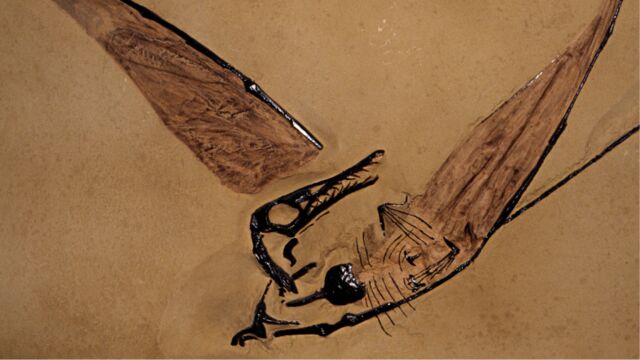‘This is of global importance because these types of discoveries are relatively rare.’ With these words, Jhonatan Alcarcon, a researcher at the University of Chile, described what he had before his eyes. In the vast Atacama Desert, which stretches for more than 1,400 kilometres, scientists have found the remains of a Pterosaur, a flying reptile.
Discover our latest podcast
Pterosaurs in Chile
Reuters reports on the splendid discovery. On Wednesday, April 6 in Chile, researcher Jhonatan Alcarcon and his team from the University of the South American country discovered a cemetery where the remains of Pterosaurs, a flying reptile that may have a wingspan of several metres, were buried. Although the find is historic, it is not a lucky one. It turns out that the remains were located less than 60 kilometres from another excavation site where pterosaurs had already been found.
The recent discovery of a rare cemetery of pterosaurs in Chile will allow scientists to obtain a lot of information related to the lifestyle of these ancient flying reptiles https://t.co/0sjHHuCEuNpic.twitter.com/lQnq1qRyzb
— Reuters (@Reuters) April 7, 2022
‘Most of the pterosaur bones found are flattened, broken,’ David Rubilar, head of palaeontology at Chile's National History Museum, told the news agency. However, here scientists were able to get their hands on several unique pieces:
Nevertheless, we were able to recover three-dimensional bones preserved at this site.
These are the 3D remains that every palaeontologist dreams of.
Read more:
⋙ Researchers have discovered a prehistoric snake that could walk
⋙ The graves of 65 British kings from King Arthur's time have been discovered
⋙ Palaeontologists find dinosaur remains in crocodile's stomach
A 200 million-year-old reptile
But what do we already know about Pterosaurs? What we need to take into account is that we are not talking about dinosaurs or a bird but about a flying reptile. It would have lived between the Trais (220 million years) and the end of the Cretaceous (66 million years). As for their size, there were all sorts: from the smallest, the size of a sparrow, to the giants with a wingspan of around ten metres.
Their weight could reach 300kg. Remember the scene with the flying reptiles in Jurassic Park 3? They were Pteranodons, which were Pterosaurs, except that in reality, they did not have claws at the end of their limbs.
This article was translated from Gentside FR.















